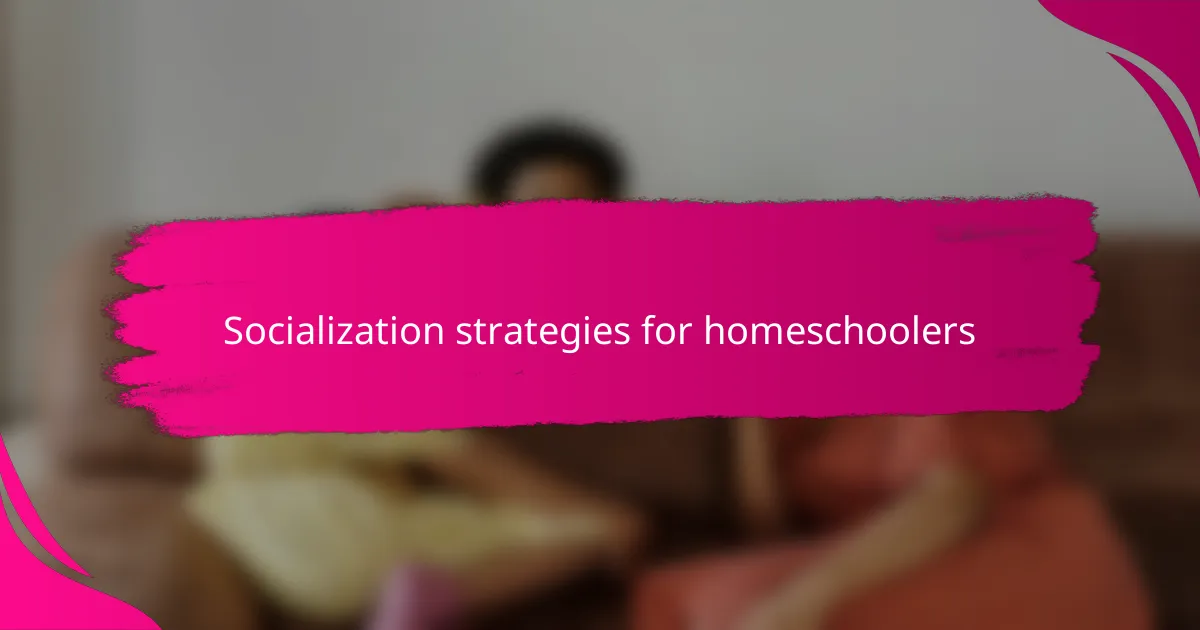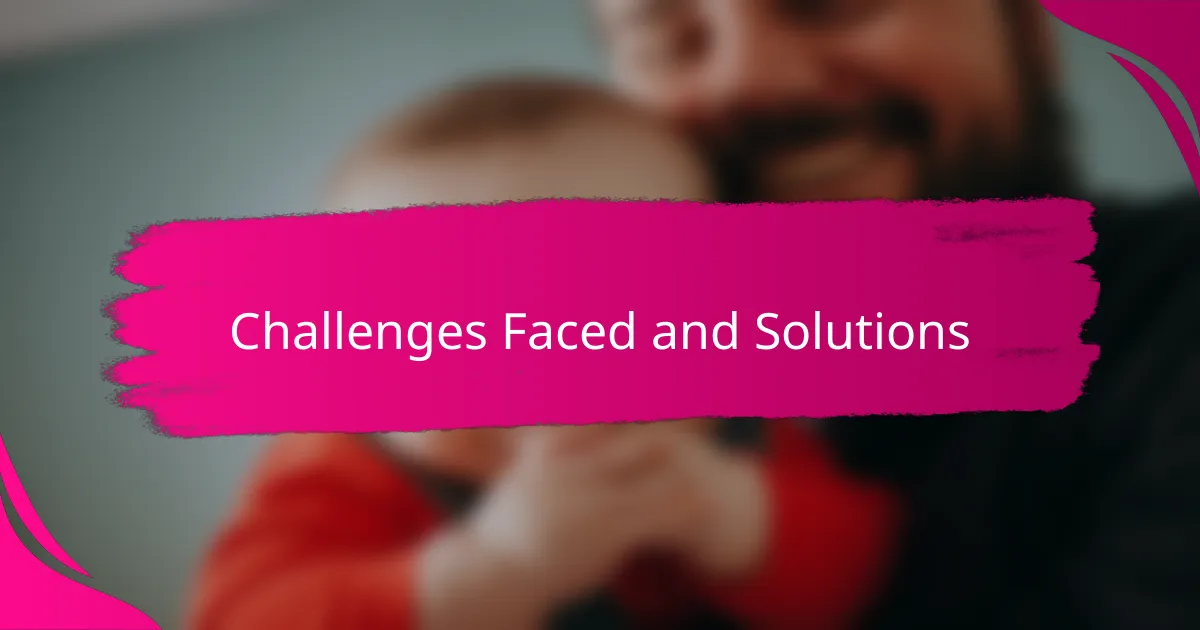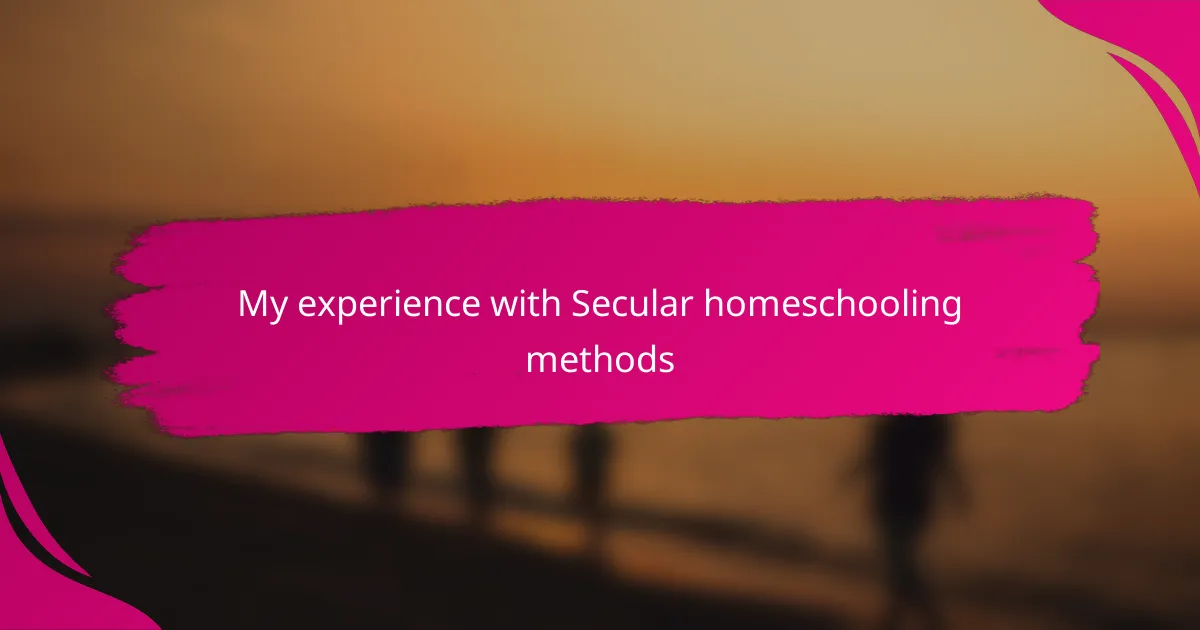Key takeaways
- Secular homeschooling promotes critical thinking and curiosity by emphasizing evidence-based learning without religious constraints.
- Documenting a flexible daily routine enhances engagement and allows for personalized exploration of subjects based on children’s interests.
- Active participation in community activities fosters socialization, empathy, and teamwork among homeschoolers.
- Building a support network and prioritizing emotional well-being are crucial for enjoying a successful homeschooling experience.

Understanding secular homeschooling
Secular homeschooling, as I’ve come to understand it, focuses on teaching children without incorporating religious beliefs. This approach resonated with me because it allowed my family to explore a wide range of ideas and perspectives freely. Have you ever felt constrained by a curriculum that doesn’t reflect your values? That’s exactly where secular homeschooling filled a gap for us—it emphasized critical thinking and curiosity over doctrine.
What stood out for me was how secular homeschooling isn’t just about avoiding religion; it’s about creating a learning environment rooted in evidence and inquiry. I found myself encouraging my kids to ask “why” and “how” at every turn, which led to some of our most meaningful conversations. It wasn’t always easy to strike the right balance, but the freedom to tailor lessons based on logic and science felt incredibly empowering.
I often wonder if more parents knew about the flexibility secular homeschooling offers, would more consider it? For us, it provided clarity and peace of mind because we didn’t have to reconcile conflicting worldviews. Instead, we focused on nurturing an open mindset—something I now see as one of the most valuable gifts we could give our children.

Benefits of secular homeschooling
One of the biggest benefits I’ve noticed with secular homeschooling is the freedom to choose materials that truly resonate with my children’s interests and learning styles. When you aren’t bound by a religious framework, you can dive into science, history, and art from so many fresh angles. Have you ever seen a child’s face light up when they discover something entirely on their own? That moment feels more frequent to me now.
Another thing I appreciate is how secular homeschooling encourages open-ended questions without leading to predetermined answers. Instead of memorizing what to believe, my kids learned to analyze information and form their own opinions. It’s remarkable how this approach boosted their confidence and made learning feel like an adventure rather than a chore.
Lastly, I can’t overstate how much peace of mind this method brought me as a parent. I wasn’t constantly worrying about conflicting worldviews clashing in our lessons. Instead, I focused on nurturing curiosity and respect for diverse perspectives—values I hope will serve my children well in the wider world. Doesn’t every parent want their child to grow up thoughtful and independent? That’s exactly what secular homeschooling helped me with.

Choosing the right secular curriculum
Choosing the right secular curriculum felt overwhelming at first because there are so many options out there. I found myself asking, “Which one aligns best with my child’s learning pace and interests?” It was clear to me that one size doesn’t fit all, so I spent time reviewing sample lessons and reading parent reviews before making a decision.
What really helped me was looking for curricula that emphasized critical thinking and hands-on activities. In my experience, materials that encourage experimentation and exploration kept my kids more engaged. For example, when we picked a science curriculum with interactive experiments, their enthusiasm skyrocketed because they weren’t just reading—they were doing.
I also learned that flexibility is key. Some curricula offer structured plans, while others leave more room for customization. I realized that blending different resources tailored to my kids’ strengths worked best for us. Have you considered mixing and matching curricula to create a personalized learning journey? For me, this approach turned out to be a game-changer.

Daily routines and schedules
Establishing a daily routine was one of the first challenges I tackled. I asked myself, how strict should our schedule be? I found that having consistent time blocks for different subjects gave us a comforting structure, but I kept things flexible enough to follow my kids’ energy and interests throughout the day.
Some days, we’d dive deep into a science project for hours, while other days called for more relaxed reading or nature walks. I’ve learned that trying to stick rigidly to a clock often backfired; instead, I paid close attention to when my children were most alert and scheduled the trickier lessons then. Isn’t it amazing how a simple shift like that can change the whole learning vibe?
One unexpected joy was how our routine created natural moments for family connection. Morning discussions over breakfast or winding down with a group review helped solidify what we’d learned without feeling like extra work. This rhythm replaced any sense of school being a chore and made the entire experience feel more like a shared adventure.

Socialization strategies for homeschoolers
Socialization was a big concern for me when we started homeschooling. I wondered how my kids would develop friendships and learn teamwork without the daily interactions a traditional school offers. What I found, though, surprised me — joining local homeschool co-ops and community classes gave us vibrant opportunities to connect with other families and build meaningful relationships.
I made it a point to involve my children in group activities like sports teams, theater workshops, and volunteer projects. These experiences didn’t just provide social exposure; they taught my kids empathy, cooperation, and how to handle diverse viewpoints. Have you ever noticed how kids thrive when they feel part of a community? That sense of belonging became a cornerstone of our approach.
Sometimes, I worried about my children missing out on casual social moments, but we got creative by scheduling regular playdates and park meetups. I realized that quality social interactions matter more than quantity. It’s about creating intentional spaces where kids feel comfortable, included, and free to express themselves—even outside a traditional school setting.

Challenges faced and solutions
One of the biggest hurdles I faced was finding secular materials that were both rigorous and engaging. It felt like searching for a needle in a haystack at times—how could I ensure the content was accurate without a religious lens but still captivating? I solved this by tapping into online homeschooling communities where parents shared their favorites, which made the journey less isolating and more collaborative.
Another challenge came from managing doubts—did I have enough expertise to teach all subjects without a traditional school system backing me up? There were moments I questioned if I was doing enough. What really helped was embracing resources like online courses and workshops, which boosted my confidence and provided a safety net I hadn’t expected going in.
Then there was the tricky balance of structure versus flexibility. At first, I swung too far trying to strictly schedule every hour, which drained both me and my kids. Have you ever felt like you’re forcing the fun out of learning? I learned to read my children’s moods and adjust plans on the fly, turning challenges into opportunities for spontaneous, joyful discoveries. That adaptability, in my experience, became the key to enjoying secular homeschooling despite its bumps.

Tips for successful secular homeschooling
One tip that really made a difference for me was setting clear goals but staying flexible about how we got there. I remember feeling overwhelmed at first, trying to map out every lesson in detail. Eventually, I realized that being open to detours—like following a sudden book or experiment interest—kept my kids excited and helped their learning feel natural rather than forced. Have you found that sometimes the best lessons happen when you’re willing to improvise?
Another strategy I can’t recommend enough is leaning on a strong support network. I connected with other secular homeschooling parents online and locally, which gave me fresh ideas and encouragement. When doubts crept in, hearing how others overcame similar struggles reassured me that I wasn’t alone. It’s amazing how much more confident you feel when you have a community cheering you on.
Lastly, I learned to prioritize balance—not just academics but emotional well-being too. There were days when pushing through a tough subject backfired, causing frustration all around. So, we built in lots of breaks, outdoor time, and moments simply to talk and reflect. Doesn’t nurturing your child’s love of learning mean honoring their pace and mood as much as their intellect? For us, that made all the difference in creating a joyful secular homeschooling experience.
